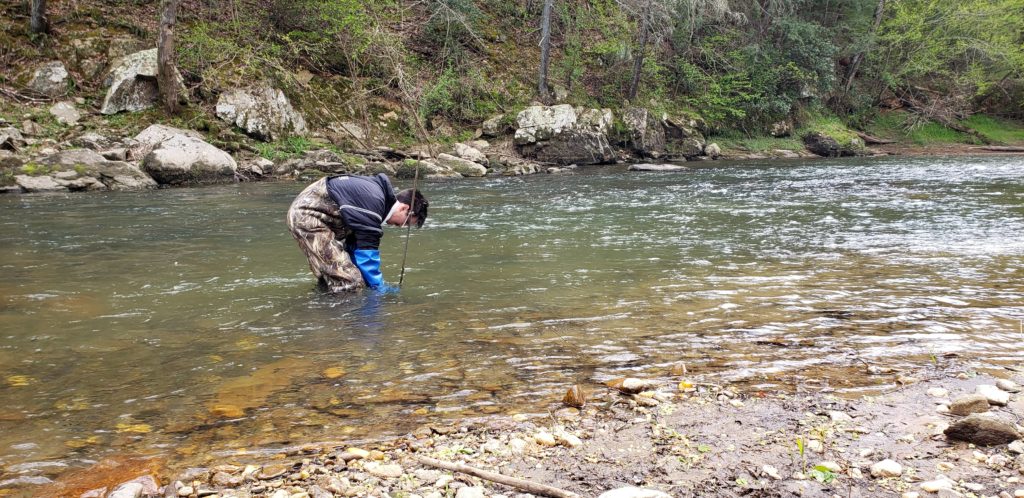River Herring in the Rappahannock: Tracking and Monitoring
Scientists from the Smithsonian Environmental Research Center (SERC) are collaborating with VWL and other groups to understand the ecology of migratory river herring in the Rappahannock River watershed. Alewife (Alosa pseudoharengus) and Blueback Herring (Alosa aestivalis), collectively called “river herring,” comprised one of the most valuable fisheries in Virginia in the 20th century. But their populations have dramatically declined in recent decades due to overfishing and the loss of freshwater habitats. Following harvesting bans in Virginia and Maryland that began in 2012, conservation groups have embarked on a concerted effort to study and restore these important fish.
The SERC Fisheries Conservation Lab has several projects focused on monitoring river herring and investigating the effects of water temperature patterns on fish habitats during annual migrations. Every spring, river herring embark on an impressive journey from the Atlantic Ocean, into the Chesapeake Bay, and up into freshwater tributaries to spawn. SERC scientists have been working closely with VWL landowners in the upper Rappahannock, where the team detected river herring further upstream than previously documented. Specifically, landowners help the researchers identify where and when these fish arrive in the river.
So far, the team has observed river herring on VWL landowner properties in the Rappahannock River upstream from Crest Hill Road in Flint Hill, VA. Recently published research also found that fish will migrate as far upstream as Flint Hill and even Huntly, VA (Ogburn et al. 2022).
This year, the SERC lab has also begun to tag river herring in Cat Point Creek, a tributary in the lower Rappahannock. The project will track the fish not only as they migrate up the watershed during the spring, but also throughout the full migration season as the fish return to ocean habitats.
This research has revealed that river herring are migrating much longer distances than previously thought.
“River herring are migrating over a thousand miles every year from the Upper Rappahannock, out to the ocean, all the way to the Gulf of Maine, and back again,” said SERC researcher Dr. Henry Legett. For Henry, this discovery uncovers new questions: “Do all the river herring in the Rappahannock make this migration? Which areas of the watershed are most heavily used by these fish to spawn? Most critically, why is the river herring population in the Rappahannock River still struggling, and what can be done to help restore this natural resource?”
River herring research in the Rappahannock comes at a critical time. Climate change is causing rivers to warm earlier and faster in the spring than before, disrupting the timing of migrations and hindering restoration efforts. But there are steps being taken that bring positive impacts. New detections of river herring further upstream suggest that these fish can access thousands of miles of habitats restored by the removal of dams in the Rappahannock, such as the removal of the Embrey Dam in 2004. And there are local solutions. By growing riparian buffers along waterways, for instance, landowners can help improve habitats for fish in their backyards.

Reference: Ogburn MB, Plough LV, Bangley CW, Fitzgerald CL, Hannam MP, Lee B, Marafino G, Richie KD, Williams MR, Weller DE. Environmental DNA reveals anadromous river herring habitat use and recolonization after restoration of aquatic connectivity. Environmental DNA. 2023:25-37. https://doi.org/10.1002/edn3.348